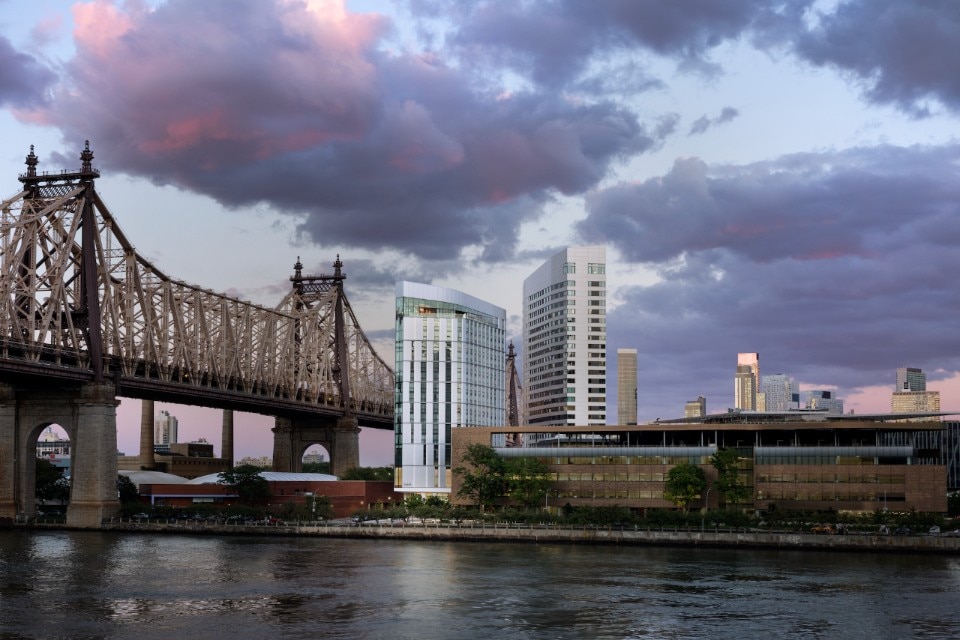Recently passed into the hands of Eric Adams’ Democratic government after the term of not-so-popular Bill De Blasio, New York owes much of its current form to Michael Bloomberg, who was its mayor until 2013. During his two terms, the race against climate change was one of the fixed points of his agenda. A key role in the project to make New York greener was played by Rohit Aggarwala, who is a recent Senior Urban Technician Fellow at Cornell Tech and was Special Advisor to the Bloomberg government and head of the C40 Cities Climate Leadership Group.
The technological branch of the university – the only Ivy League university in the United States to offer public programs – has its own campus on Roosevelt Island, a thin strip of land in the East River between Manhattan and Queens, a former sanatorium and poorhouse in New York City, connected to the rest of the city by a single subway station, a cable car and ferry, as well as a single bridge. A parallel New York, almost suspended in time, where the futuristic structures of the campus – located on the southern part of the island – appear as a postmodern overlay.
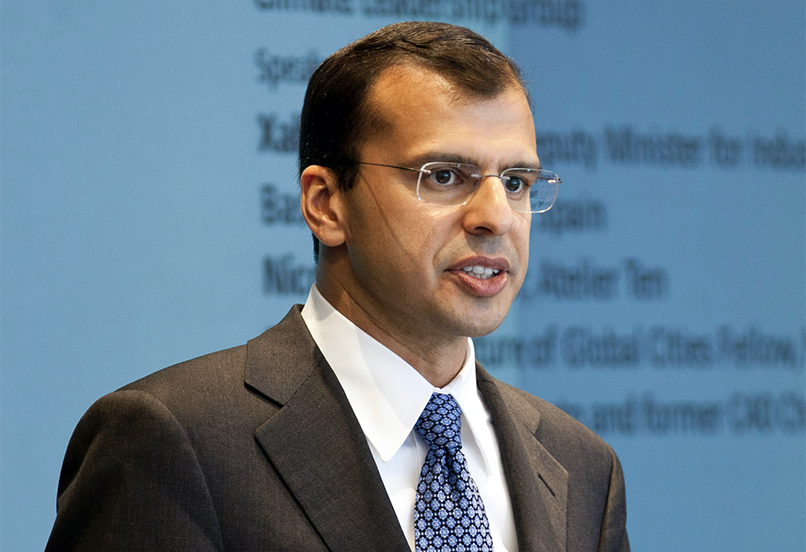
“The local community here is very established, considering that up until twenty years ago you could only go back to the city by cable car. It was like a small town”, Aggarwala says as we walk around campus. “Here on Roosevelt Island there are three main research areas. The first is medical technology, the second the Center for Digital Life, and finally the Urban Tech Hub, where I work”.
The new Cornell Tech hub was opened by Bloomberg himself, as an effort to create jobs but also to create a new globally attractive research and technology hub. The buildings include a dormitory – the city’s largest passive building, the Tata Center designed by Weiss/Manfredi to withstand East River flooding, and the main building, which also houses the Bloomberg Center.
“Despite its many universities, New York City could not yet boast the equivalent of MIT or Stanford, an engineering research hub that creates and attracts businesses and start-ups”, Aggarwala says. After winning the competition, she explains, permission was obtained to construct the new buildings here on Roosevelt Island, meeting very high energy standards. “During the construction site on campus, everyone had to learn very quickly; it wasn’t the standard approach that had been used up to that point”.
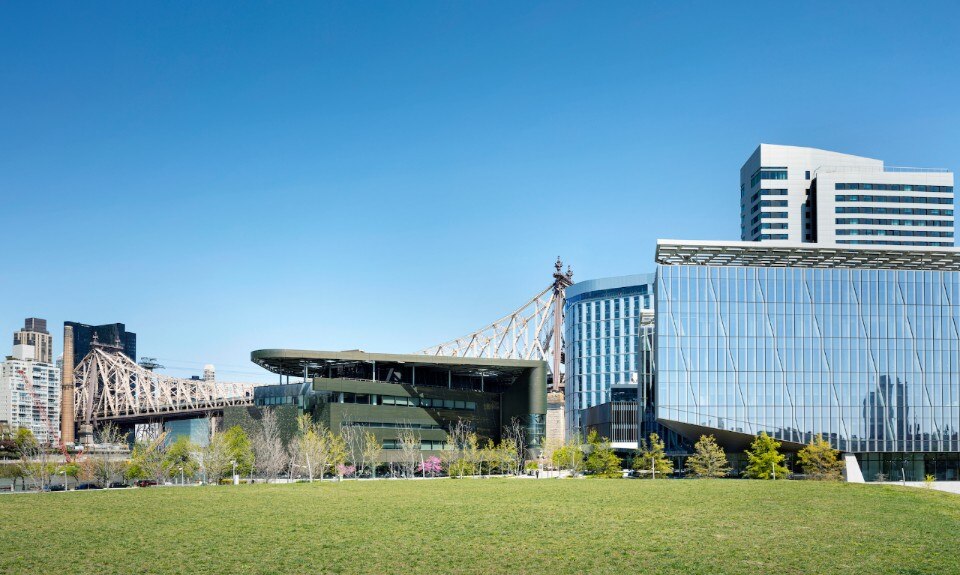
An investment in technological innovation that has its ideological roots in its very foundations. Just a few years after its opening, Cornell Tech stands internationally as a new voice, with a clear vision of how cities work and the means for thinking of cities as the systems of systems, offering students the opportunity to study and create a variety of forms of urban technology, focusing on digital technology to make cities more resilient. The last years, with the pandemic, were the first challenge to be faced, forcing us not only to think new ways of doing research, but also potential tools to improve urban efficiency. Let’s remember, though, that New York City represents one of the most densely populated metropolises in the United States.
Will it ever be transformed into a sustainable city? “The answer is yes, but it will take a lot of work”, Aggarwala says. She explains a paradox: the average New Yorker has a carbon footprint that’s about a third of the rest of Americans. “They’re used to small spaces, they don’t have cars” continues the researcher. “The challenge, paradoxically, is that vertical cities have to work much harder to become carbon neutral than the suburbs”. In a landscape of single-family homes, in fact, all it takes is for all of them to have photovoltaic panels, for households to have an electric vehicle, and the suburbs become sustainable. “We’re talking solely about the carbon footprint, of course.”
In a city, things are more complicated. Especially when it comes to transformation. “New York has been pretty though in passing laws and jobs to require energy efficiency. The problem is that it seems to be difficult to change anything”. One of the main obstacles to a sustainable evolution of the city is an overly strict and slow bureaucracy. “Any kind of construction work is difficult, and a lot more expensive than anywhere else in the United States”. As for the reasons, explains Aggarwala, “no one really understands them”. And she thinks this is “the greatest problem we’ll have to face in terms of sustainability”. Also, there is the challenge of the transportation system. Underground construction costs are two to three times higher than in any other American city, she explains. Perhaps among the highest in the world. “There’s an example in the neighbourhood where I live, on the Upper East Side. The Second Avenue underground. Has just been extended. It’s the most expensive underground line in the world, $2 billion a mile. Probably a couple more underground lines in New York will have to be built, but the underground can’t be the only answer. For example, I think electric buses are an important tool, but really I’d rather people used diesel buses than drive a car.”
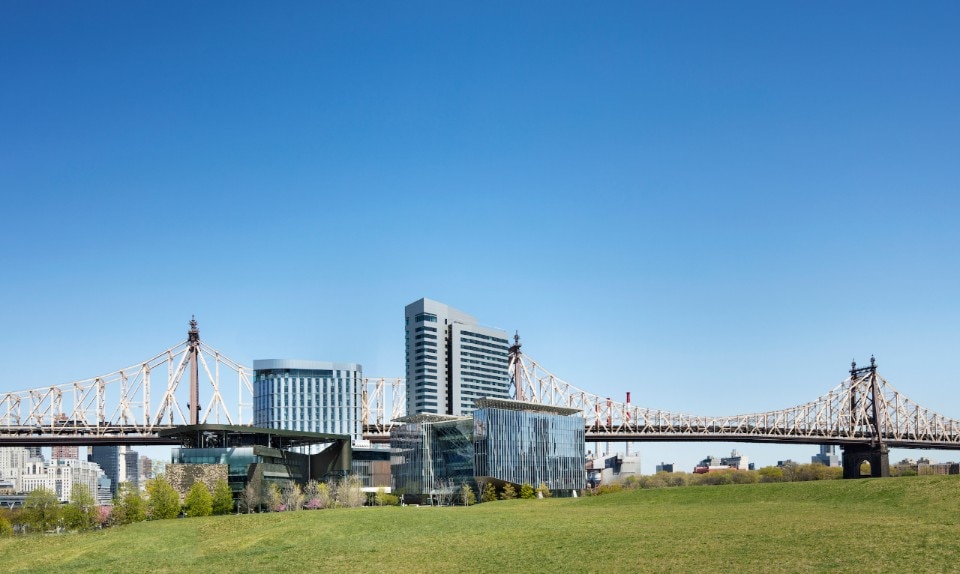
Talking to Aggarwala, it seems complicated to make comparisons with other sustainability policies carried out, for example, in Europe, also considering the considerably different costs: in the United States gas – made cheaper by the legalization of fracking – has always been used more. “I think Europe is traditionally much faster in adopting new technologies. In the U.S., we’re just starting to think of using wood construction for tall buildings, while in Norway, Sweden and Switzerland they’re already building twenty-story buildings out of wood. I feel like there’s a greater technological progress in Europe, and a greater focus on managing energy consumption.”
A complex and slow organization, made even more difficult by huge costs, that involves changing an entire infrastructure network. In this perspective, the role of data collection and analysis becomes essential for organizing and managing places. Big data and Smart Cities are two concepts that go hand in hand, considering the potential of data collection to improve the quality of life of a community, easily overcoming concerns about the costs.
The challenge of urban technology is how to connect the digital with the existing systems
How could we use these tools to minimize waste, within the complicated management of a metropolis? “I’ve never used the term Smart City, I don’t like it. Rather, I talk about urban technology. I think there are some things for which big datas, for example, can be useful. However, to fully exploit predictive technology and data collection would require adapting the existing rules. For example, in New York City the law requires to have facades inspected every five years. As you can imagine, it’s not only a very expensive operation, but it’s also cumbersome for the city: you have to put up scaffolding around the building to protect pedestrians. If the Department of Buildings clearly stated the requirements of the inspection, we would actually understand whether a drone could meet or exceed that safety standard. And if the answer is yes, it would be an advantage for everyone. But that requires a shift in thinking and a level of creative thinking that you don’t always see in city government. A digital solution doesn’t just have to replace humans.”
Another problem for technological adaptation in the U.S. is the lack of a clear privacy law for data collected online. “And that’s a really big problem”, Aggarwala explains. “It’s been analyzed that a community of people who are concerned about privacy, are against technology itself. And that makes everything much more controversial than it needs to be, because the immediate concern is how data will be protected. I think solving this would answer a lot of questions and all of a sudden it would be a lot easier to obtain public support for using cameras to enforce traffic violations, collecting a lot more data about what’s happening on the street, because people would feel comfortable.”
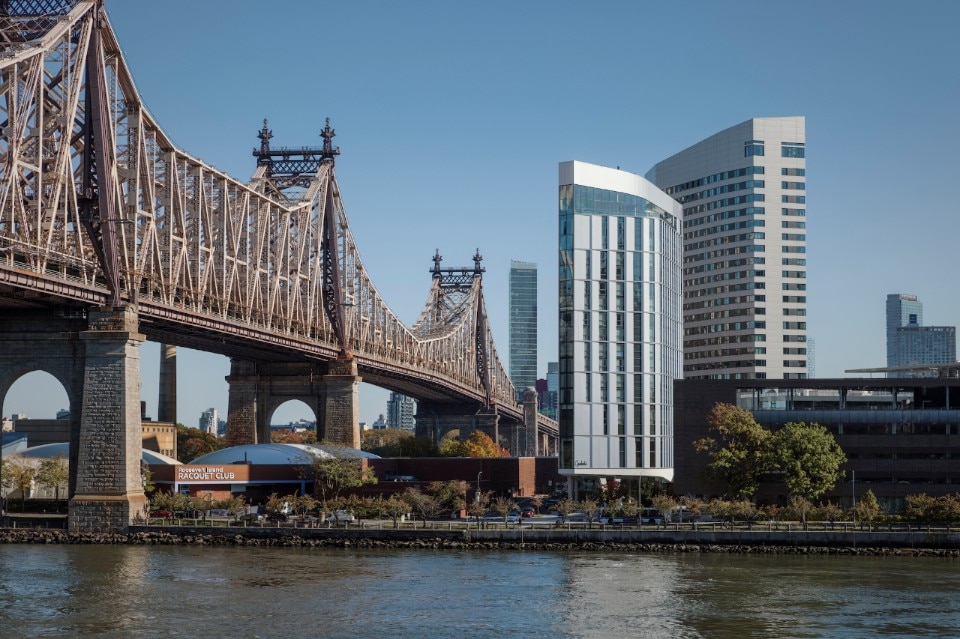
The situation Aggarwala describes is that of a city, New York, where innovation is made extremely complicated by red tape and the interests of individuals or groups. An obstacle to building a more modern and sustainable city. Meanwhile, on Roosevel Island, researchers are working on new solutions for the future. “We’ve opened a Master’s program in Urban Technology this year,” Rit explains. The goal of the program is to help students analyze specific technologies and tools, while remaining aware of the wider context, she emphasizes. “This way they will be able to understand not only how digital works, but also how the city works as a community”. The idea is to connect the old and the new, just as is happening here on the island. Many start-ups focus on the digital aspect of things, but cities lag behind as an analog infrastructure, from sewer and geothermal systems, to buildings. “The challenge of urban technology is how to connect the digital with the existing systems.”
Opening image: Cornell Tech, Roosevelt Island, New York


